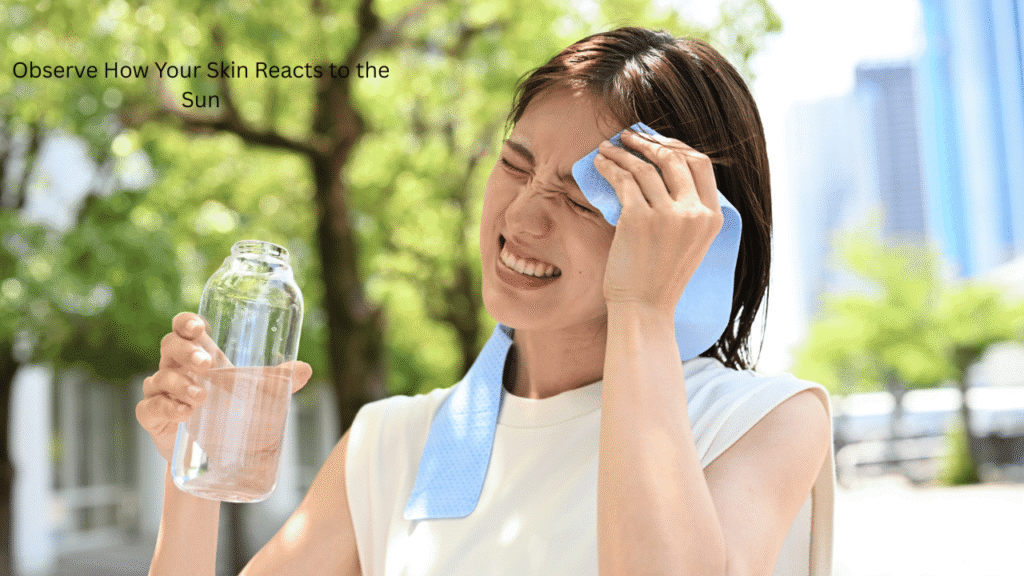How to Find Your Skin Undertone: A Complete Guide
How to Find Your Skin Undertone: When it comes to makeup, fashion, and overall personal style, one of the most important aspects to consider is your skin’s undertone. Your undertone is the subtle hue that lies beneath the surface of your skin, and it plays a significant role in determining which colors look best on you. Whether you’re choosing foundation, clothing, or accessories, understanding your skin’s undertone can make a world of difference in achieving a harmonious, flattering look.
But how exactly do you identify your skin undertone? Is it really that important? In this detailed guide, we will explore the concept of skin undertones, provide a step-by-step process for discovering yours, and offer practical tips for applying your newfound knowledge to various aspects of your beauty routine and wardrobe.
What Are Skin Undertones?

Before we dive into how to find your skin’s undertone, it’s essential to understand what it actually is. Your skin tone refers to the visible color of your skin, which can vary from pale to dark. However, your undertone is different—it’s the underlying hue that gives your skin its overall tone. Unlike skin tone, which can change based on sun exposure or environmental factors, your undertone remains consistent throughout your life.
There are three primary undertones:
- Warm Undertones: Skin with warm undertones tends to have a yellow, peach, or golden hue. People with warm undertones often tan easily and have a “healthy glow” when they are in the sun.
- Cool Undertones: Cool undertones have pink, red, or blue hues beneath the surface. Those with cool undertones often burn more easily and may notice that their skin looks more flushed or rosy in certain lighting.
- Neutral Undertones: Neutral undertones are a mix of both warm and cool hues. People with neutral undertones may find that they have a balanced, even skin tone that doesn’t lean too warm or too cool. These individuals tend to have a wide range of colors that complement them.
Understanding your undertone is important because it can guide you in choosing makeup shades, clothing colors, and even jewelry that best suit your complexion. But how can you determine which undertone you have?
Step-by-Step Guide: How to Find Your Skin Undertone

Finding your undertone isn’t as difficult as it might seem. Below are a few tried and true methods for determining whether your undertones are warm, cool, or neutral.
1. Check Your Veins
One of the easiest and most commonly recommended methods for determining your skin undertone is by examining the veins on your wrist.
- Warm Undertones: If your veins appear more greenish, you likely have warm undertones.
- Cool Undertones: If your veins appear blue or purple, you likely have cool undertones.
- Neutral Undertones: If your veins appear to be a mix of blue and green, you might have neutral undertones.
2. The Jewelry Test
Jewelry can be a good indicator of your undertone. The colors that flatter you most in jewelry can provide clues as to your skin’s natural hue.
- Warm Undertones: Gold jewelry tends to look best on people with warm undertones. The warm, rich glow of gold enhances the natural warmth in the skin.
- Cool Undertones: Silver jewelry tends to look better on people with cool undertones. It complements the cooler hues in the skin.
- Neutral Undertones: People with neutral undertones can usually wear both gold and silver jewelry equally well.
3. Observe How Your Skin Reacts to the Sun

Your skin’s reaction to the sun can also give you insight into your undertone. Although this method isn’t foolproof, it can help you confirm your undertone.
- Warm Undertones: People with warm undertones typically tan easily and rarely burn. They might notice their skin developing a golden or olive tint after being in the sun.
- Cool Undertones: People with cool undertones often burn more easily and may have a tendency to develop a pinkish or red hue after sun exposure.
- Neutral Undertones: Those with neutral undertones might burn, but they may also tan with a balanced golden hue that isn’t too yellow or too red.
4. White Paper Test
To perform the white paper test, hold a piece of pure white paper next to your face in natural light. Make sure your face is clean and free of makeup for the most accurate results.
- Warm Undertones: If your skin appears yellow, peach, or golden against the white paper, you likely have warm undertones.
- Cool Undertones: If your skin appears pink or blue next to the white paper, you most likely have cool undertones.
- Neutral Undertones: If your skin appears neutral and doesn’t have a strong yellow or pink appearance, you might have neutral undertones.
5. Try on Different Colors
Another way to find your undertone is by trying on different clothing or makeup colors and seeing which ones look best on you.
- Warm Undertones: If you look best in earthy tones, such as reds, oranges, yellows, and browns, you probably have warm undertones. Warm-toned individuals also tend to look great in rich, golden colors.
- Cool Undertones: If you look great in colors like blue, emerald green, lavender, and pink, you likely have cool undertones. Cool-toned individuals often shine in cool shades of jewel tones like sapphire or ruby.
- Neutral Undertones: If you can pull off both warm and cool colors without one looking better than the other, you likely have neutral undertones. Neutral undertones can wear most colors without clashing.
6. Consult a Professional

If you’re still unsure about your undertone after trying the above tests, consider consulting a makeup artist, stylist, or dermatologist. These professionals can help you identify your undertone and provide tailored advice for your beauty and fashion choices.
How Knowing Your Skin Undertone Can Help You

Now that you know how to identify your skin undertone, you may wonder why it’s so important. Understanding your undertone can improve your overall appearance in several ways:
1. Choosing the Right Foundation Shade
Finding your undertone is crucial when it comes to selecting the perfect foundation shade. Choosing a foundation that matches your undertone will make your skin look more natural and glowing.
- Warm Undertones: Look for foundations with yellow, golden, or peach undertones.
- Cool Undertones: Opt for foundations with pink, red, or blue undertones.
- Neutral Undertones: Choose foundations that have a balance of yellow and pink or beige tones.
Using the wrong undertone in your foundation can make your face look mismatched with your neck and body, so it’s important to get it right.
2. Picking the Right Clothing Colors
Your skin undertone influences which clothing colors will look best on you. Wearing colors that complement your undertone will enhance your appearance and give you a more harmonious, glowing look.
- Warm Undertones: Earthy tones, such as oranges, reds, yellows, warm browns, and golds, work well with warm undertones. Olive green, camel, and coral are also great options.
- Cool Undertones: Jewel tones like sapphire, emerald green, and amethyst look fantastic on cool undertones. Cool blues, purples, and pinks will complement your skin’s natural hues.
- Neutral Undertones: If you have neutral undertones, you can wear a variety of colors, including both cool and warm tones. Soft shades like peach, jade green, and cool pinks work especially well.
3. Selecting the Right Hair Color

Your undertone also influences the hair colors that look best on you. Whether you’re considering a new dye job or simply experimenting with highlights, choosing the right shade can make a big difference.
- Warm Undertones: Warm hair colors, such as golden blonde, copper, rich browns, and red tones, will work well with your undertone.
- Cool Undertones: Ash blonde, platinum, burgundy, and cool brown shades look great on cool undertones.
- Neutral Undertones: People with neutral undertones can rock almost any hair color, from neutral browns to blonde shades and even cool tones like silver or platinum.
4. Choosing the Best Makeup Shades
From blush to eyeshadow to lipstick, your undertone will guide you in selecting makeup shades that enhance your natural beauty.
- Warm Undertones: Peachy, coral, and terracotta blushes, golden highlighters, and warm red or orange lipsticks will complement your skin’s undertone.
- Cool Undertones: Pink, plum, and berry blushes, silver highlighters, and blue-toned red or pink lipsticks are ideal for cool undertones.
- Neutral Undertones: Neutral undertones can go for a variety of makeup shades, including both warm and cool tones. Nude pinks, peach blushes, and brown-toned lipsticks work beautifully.
Conclusion
Finding your skin undertone is an essential step in enhancing your personal style, whether it’s in makeup, clothing, or hair color. Once you know your undertone, you’ll have a better idea of which colors, products, and styles are most flattering for you. Remember that your undertone is a natural characteristic that stays the same throughout your life, and learning to embrace it will give you a more polished and coordinated look.
By using the methods outlined in this guide, you can confidently identify your skin undertone and start making smarter beauty and fashion choices that flatter your natural complexion. Happy styling!






